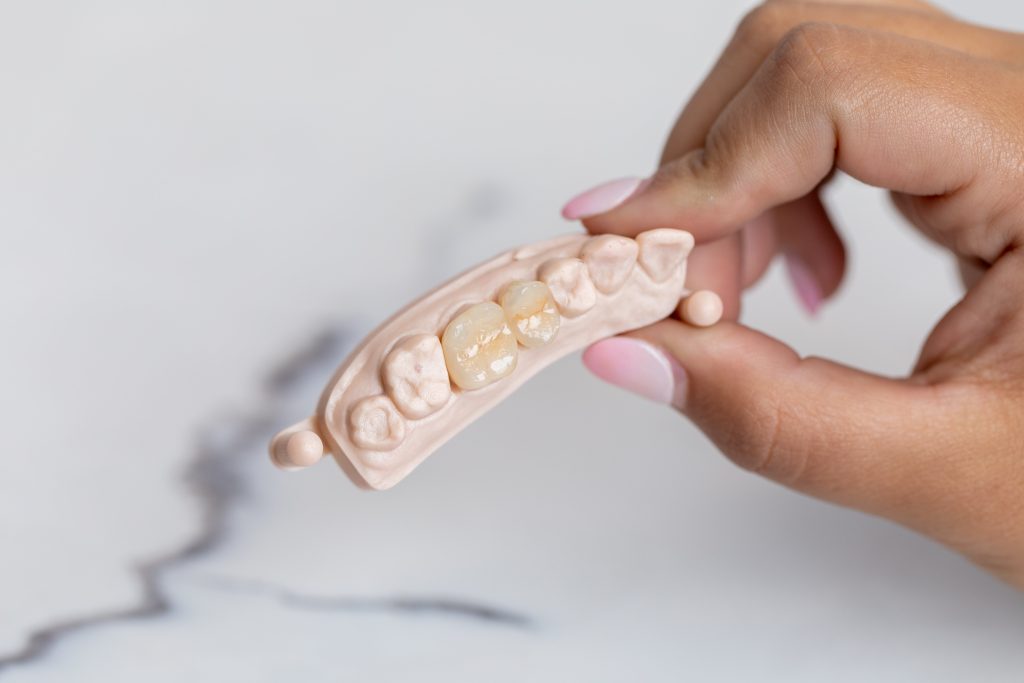Introduction
Maintaining good oral health means more than just brushing, flossing, and getting a brighter smile. It’s about protecting gums, teeth, and other mouth parts that enable you to eat, speak, and socialise without discomfort.
It’s about making healthy choices to promote positive and sustainable well-being. It’s about leading a quality life free from active diseases. Therefore, knowing how to develop and maintain good oral health and hygiene is vital.
It’s not time-consuming, expensive, or difficult but can offer many worthwhile benefits to your mouth and overall well-being.
Oral Health Reflects Your Overall Health
Your mouth is the mirror that reflects what’s going on with the rest of your body. A healthy mouth plays a crucial role in achieving optimal health. It also helps to diagnose and treat many illnesses.
An oral examination can detect signs of many systemic diseases like immune disorders, certain types of cancer, etc. In addition, several studies on oral-systemic health prove a direct link between oral infections and strokes, diabetes, and heart and lung diseases.
Developing and maintaining healthy oral habits is essential to ensure a quality life. In addition, if you have any oral issues, a regular dentist visit can help in early diagnosis, better prevention, and timely treatment.
So, optimal oral health means:
- Having fresh breath
- Having healthy teeth and gums
- Being able to speak and chew properly
- Feeling confident about your smiles
You can find a key to developing and maintaining excellent oral health in this comprehensive guide. So, read it to get complete knowledge.
What Causes Oral Diseases?
The primary factor responsible for causing oral diseases is poor oral hygiene. If you don’t care to brush and floss your teeth regularly, it may cause food particles to stick between your teeth resulting in plaque. Plaque may cause dental cavities and gum diseases.
In addition, a poor diet can cause dental issues. For example, a diet high in sugars and starches increase plaque buildup. Other common causes are:
- Bacteria – Plaque is a sticky, colourless film that forms on your teeth’ surface. It consists of bacteria, which produce toxins that can inflame your gums, causing gum infections.
- Poor nutrition – If your diet lacks essential nutrients like minerals and vitamins, it can cause periodontal disease or other dental issues.
- Smoking – Smoking tobacco leads to bad breath and dental stains. It increases the risk of tooth decay, gum disease, and oral cancer.
- Tooth Grinding or Clenching (bruxism) – It can cause damage to tooth enamel, making it more sensitive to hot or cold food items or beverages.
- Medical conditions – People with certain medical conditions like diabetes, leukemia, HIV/AIDS, and eating disorders are more susceptible to infection. They may have difficulty fighting against the bacteria that invade your mouth and attack your teeth or gum.
- Genetics – Some people are at a higher risk of getting oral diseases because of their genetic factors.
Some Common Dental Issues
Dental caries or cavities
Dental caries, also known as cavities, are caused by bacteria that consume sugar and produce acids. These acids wear away the tooth enamel, eventually leading to a cavity. The common way to prevent cavities is to brush your teeth regularly and floss daily, avoiding sugary snacks and drinks. You can also increase your fluoride intake, which helps protect your teeth from the effects of acid erosion. If you develop a cavity, your dentist can treat it with a filling or other dental procedure.

Periodontitis or gum disease
Periodontitis, also known as gum disease, is a common infection of the gums. It is most often caused by poor oral hygiene. However, other factors like smoking and diabetes can also contribute to gum disease.
Symptoms of gum disease include red, swollen, and bleeding gums; bad breath; and loose teeth. Gum disease can lead to tooth loss if you ignore timely treatment. However, gum disease treatment depends on its severity but may include antibiotics, scaling and root planning (deep cleaning of the teeth), and dental surgery.
If you are experiencing any symptoms of gum disease, please see your dentist for diagnosis and treatment. Early treatment is essential to preventing further damage to your teeth and gums.
Toothache and jaw pain
Potential causes of toothache and jaw pain include temporomandibular joint disorder (TMJ), gum disease, tooth decay, and abscessed teeth.
You should see a dentist for a diagnosis and treatment plan if you have a toothache and jaw pain. Depending on the cause of your symptoms, your dentist may recommend treatment options such as restorative dentistry (e.g., filling cavities), dental implants, orthodontics (e.g., braces), or surgery.
Possible causes of toothache and jaw pain include:
- Tooth decay or cavities
- Tooth infection, such as an abscess
- Gum disease
- Trauma to the teeth or jaws
- Teeth grinding (bruxism)
- A tumour in the mouth or jaws

Bruxism or teeth grinding
Bruxism is a condition where one clenches or grinds their teeth involuntarily. It’s a widespread problem, and it can cause a lot of damage to your teeth over time.
Some people grind their teeth because they’re under stress or anxiety. At the same time, others do it because they have problems with their jaw alignment. And some people do it because they have a habit of grinding their teeth at night.
If you think you have the habit of grinding your teeth, see your dentist, and they can figure out the root cause and recommend treatment options.
Stained and discoloured teeth
Teeth can become discoloured for a variety of reasons. Coffee, tea, red wine, and smoking are some of the most common culprits. Tartar (calcium phosphate) can also build up on teeth over time and stain them or cause discolouration.
There are several ways to whiten teeth. Over-the-counter whitening products such as toothpaste, mouthwashes, or strips can be effective. However, professional whitening treatments may be necessary for more stubborn stains or discolouration. It involves having your dentist apply a bleaching agent to your teeth, breaking down the stain molecules.
However, there are some basic things you can do to prevent your teeth from staining:
- Brush your teeth regularly with a whitening toothpaste
- Floss your teeth regularly
- Use a mouthwash designed to help whiten teeth
- Avoid foods and drinks known to cause staining, such as coffee, red wine, tea, etc.
- Avoid smoking
Crooked or misaligned teeth
One of the most common reasons for crooked teeth is that our jawbone changes shape as we grow. If your baby teeth didn’t fall out correctly, or if your adult teeth came in too early or too late, it could cause the jawbone to change shape. It will then cause your permanent teeth to become crooked.
Other reasons for crooked teeth include thumb sucking and pacifier use after age three, which can push teeth out of alignment, and incorrect dental care, such as not brushing enough, not flossing regularly, or using a hard toothbrush.
A misaligned bite (when the upper and lower jaws don’t fit together correctly) is another common reason for crooked teeth.
The good news is that crooked teeth can be corrected with braces or orthodontics. However, in some severe cases, surgery may also be necessary. If you’re worried about your teeth, it’s best to consult your dentist to see what treatment options are available.
Diagnosis of Oral or Dental Diseases
Your dentist can diagnose several dental and oral diseases using modern equipment and his experience. The most common ones include cavities (tooth decay), gum disease, and oral cancer.
Your dentist will physically examine your teeth and gums and take x-rays for any signs of decay or infection. They may also order other tests, such as a CT scan or biopsy, to help rule out other potential causes of your symptoms.
If you are experiencing any symptoms that concern you, you must see your dentist for an evaluation as soon as possible. Early diagnosis and treatment are vital in preventing more severe problems down the road.
Treatment of Dental or Oral Diseases
You must see your dentist every 6 months for a checkup and cleaning. During these visits, your dentist will look for any signs of dental or oral diseases. If left untreated, these diseases can lead to serious health problems, such as heart disease and stroke.
Some common dental and oral diseases include:
Cavities (tooth decay) – Your dentist will treat cavities by removing the decayed tooth portion with a drill and then using a bonding material to fill the resulting hole.
Tooth loss – Dental implants are ideal for replacing missing teeth. The process involves inserting a titanium implant into your jawbone that is then fitted with a crown to replace your missing tooth. Alternatively, you can choose dentures or bridges to replace one or more missing teeth.
Gum disease – Gum disease is a bacterial infection that affects the gums and can lead to tooth loss. Scaling and root planning are common treatments for gum disease. It cleans gums and teeth and removes plaque or tartar. However, the dentist may also use surgery to address more severe problems.
Bad breath – Poor oral hygiene can cause bad breath, and you can treat it by brushing and flossing regularly. Sometimes, your dentist may recommend specific toothpaste or mouthwash to solve the issue. However, some medical conditions may also be responsible for causing bad breath. In that case, you may require treatment from a doctor.
Prevention: Oral Hygiene Best Practices
Oral hygiene is one of the most important aspects of preventive care. Good oral hygiene can help avoid cavities, gum disease, and other health problems.
There are a few basic oral hygiene best practices that everyone should follow to keep their mouth healthy and prevent gum diseases and dental cavities:
Brush your teeth twice daily with toothpaste containing fluoride.
Floss daily to remove plaque and bacteria from between your teeth.
Use a tongue scraper to remove bacteria and food particles from the surface of your tongue.
Drink plenty of water and limit sugary drinks to help keep your mouth moist and discourage the growth of bacteria and plaque.
See your dentist for regular check-ups and professional cleanings.
Have a healthy diet consisting of all nutrients.
Avoid smoking
An oral hygiene routine is essential to keep your mouth healthy. You must keep these basic things in mind to protect your teeth from plaque, tartar or harmful bacteria. However, you can speak to your dental hygienist if you need a personalised oral health and hygiene regimen.
Who Is a Dental Hygienist?
A dental hygienist is a health care professional who provides preventive and therapeutic oral health care to patients. Dental hygienists clean teeth, examine patients for signs of oral disease, provide dental hygiene education, and may administer local anaesthetics. They are often the first defence against gum disease and tooth decay.
Dental hygienists typically need an associate degree in dental hygiene. Some states allow graduates of vocational or technical programs to practice without a degree, but most employers prefer to hire degreed professionals. Licensure is required in most states.
Dental hygienists must have a strong understanding of the principles of general dentistry to provide the best care for their patients. They also need to be good at communicating with patients and explaining the importance of good oral hygiene.
Dental hygienists use various tools to clean teeth, including manual toothbrushes, ultrasonic scalers, and fluoride products. They typically work in private dental practices but may also work in nursing homes, hospitals, or schools.

When Do You Need to See a Dental Hygienist?
Generally, dental hygienists recommend that you visit them every six months. It ensures that oral health remains optimal and prevents future problems from developing.
However, the schedule may vary depending on the person’s oral health and individual needs. For example, people with braces may need to see a dental hygienist more often to ensure they’re cleaning all the nooks and crannies properly. Pregnant women or those taking certain medications may also need to visit a dental hygienist more frequently.
In addition, some people, especially those with gum disease, may need to visit a dental hygienist more often (e.g., every three or four months). And those who have had extensive dental work (such as crowns, bridges, or implants) may also need to visit more frequently to keep everything looking and functioning at its best.
A dental hygienist can help you keep your teeth and gums healthy by cleaning your teeth, teaching you how to brush and floss properly, and providing advice on improving your oral health. So, if you’re unsure when to see a dental hygienist, it’s best to speak with your dentist about it. They’ll be able to give you specific advice based on your oral needs.
Does A Dental Hygienist Use a Painful Treatment Method?
A dental hygienist uses a pain-free treatment method to solve your dental worries. The main goal of a dental hygienist is to help maintain oral health by removing plaque and calculus from teeth. Dental hygienists will use various instruments, including scaling tools, curettes, and toothbrushes. While some people may find the procedure slightly uncomfortable, it is not painful.
The most common treatment methods used by dental hygienists are:
Scaling : It is the process of removing plaque and tartar from the teeth with a scaler or ultrasonic instrument. Scaling involves using a metal instrument to scrape the calculus off the teeth. In some cases, anaesthesia may be used to numb the area around the teeth being scaled. Generally, the dental hygienist uses numbing agent so you will not feel any pain during the procedure.
Root planing : Root planing is a dental procedure that involves scraping and smoothing teeth’ roots. It helps to remove tartar and plaque below the gum line and reduce the depth of periodontal pockets. It can also help to improve tooth mobility and reduce gingival inflammation.
It can be a little uncomfortable because the roots of your sensitive, but most people say it’s not at all painful. You may experience some mild discomfort or sensitivity in the days following the procedure, but this should go away within a week or two. If you have any concerns or questions, talk to your dental hygienist.
Tooth Whitening : Teeth whitening is a popular way to improve the appearance of your teeth. Whitening can be done at home or in a dental office.
A dental hygienist does in-office whitening. They will apply a bleaching agent to your teeth and use a laser or light to activate it. In-office whitening is a faster, more effective, and painless procedure.
There may be some minor discomfort when your dental hygienist first applies the whitening gel to the teeth, but this quickly disappears.Pit and Fissure Sealant : Dental sealants are plastic coatings painted on the chewing surfaces of the molars and premolars. They act as a barrier between the tooth and plaque, preventing plaque from building up and hardening into tartar. Sealants can last for several years before they need to be replaced.
It is a quick, easy, painless procedure that takes only a few minutes to seal the pits and fissures on your molars.Fluoride Application : Fluoride is a mineral that helps to prevent tooth decay and cavities. It is often applied to teeth through fluoridated water, toothpaste, or rinses. Fluoride helps to remineralise teeth by repairing early signs of enamel decay and strengthens teeth against further acid attacks.
Your dental hygienist can apply fluoride can also be applied directly to teeth. It is called topical fluoride treatment. Topical fluoride treatments prevent cavities, strengthen teeth, and reverse early signs of tooth decay. They can also help reduce sensitivity to hot and cold foods and drinks.
The topical fluoride treatments are not painful. On the contrary, they can be quite pleasant. The fluoride is a gel brushed onto the teeth and feels like toothpaste. There may be a slight tingling sensation for a few seconds after the treatment, but this is normal and goes away quickly.
In addition to the professional dental cleaning that a dental hygienist provides, there are a few at-home care methods that can help keep your gums and teeth healthy.
One of the most important is to brush your teeth two times a day using a soft-bristled toothbrush and fluoride toothpaste. Be sure to touch the inside surfaces of your teeth and use gentle circular motions. It would help if you also floss once a day using fluoridated floss.
Another crucial part of good oral hygiene is avoiding sugary foods and drinks, which can cause cavities. And finally, visit your dentist for regular check up and cleaning.
Final Thought
Good oral health is key to overall health and well-being. It’s about having healthy teeth and gums and a healthy body. Conversely, poor oral health has been linked to various diseases and conditions, including heart disease, stroke, diabetes, and cancer.
The best way to maintain good oral health is by practising good oral hygiene habits. It includes brushing your teeth at least twice a day, flossing once a day, and using mouthwash. Also, limit your sugary foods and drinks, as sugar is one of the leading factors for tooth decay.
It’s also important to see your dentist or dental hygienist for regular check-ups and cleanings. So visit our expert oral hygienist or dentist and see what difference they can make in your living standard by educating you on maintaining a good oral care routine.
Establishing a healthy dental care routine for kids early on is essential. Some things you can do include:
Start early – The earlier you start, the more likely your child will develop good dental habits.
Brush their teeth twice a day – Ensure your child brushes their teeth in the morning and at night.
Use fluoridated toothpaste – Fluoride helps to strengthen teeth and protect them from decay.
Give them healthy snacks and drinks – Give your child snacks and drinks that are good for their teeth, like water, fruits, and vegetables.
Take them for regular check-ups – Take your kids for regular check-ups with a dentist so they can get professional treatment and advice.
The correct technique for brushing teeth is to hold the toothbrush at a 45-degree angle against the gum line and use gentle circular motions.
You need to curve the bristles into a C-shape to brush the inside surfaces of your teeth and use light up-and-down strokes. Finally, use back-and-forth strokes to brush the chewing surfaces of your molars. Be sure to spit out any toothpaste after brushing, and do not swallow it.
There are some general things to keep in mind when brushing your teeth. First, brushing your teeth at least twice a day is essential.
Make sure to use a soft-bristled toothbrush and use circular motions when brushing.
Be sure to brush the front and back of the teeth and the tongue (to help remove bacteria).
Don’t forget to spit out the toothpaste after brushing.
Brushing also depends on what you’re using to brush your teeth. If you’re using a manual toothbrush, hold the toothbrush against your teeth and brush with a circular motion. If using an electronic toothbrush, hold it against your teeth and brush it with a back-and-forth motion.
Flossing is simple. Take a piece of 18 inches long floss, and wrap it around your middle fingers, leaving about 2 inches of floss between your fingers.
Hold the floss tightly between your first finger and thumbs, using a gentle sawing motion to move the floss up and down against each tooth. Be sure to curve the floss around each tooth and use a gentle back-and-forth motion along the gum line. Don’t forget to go behind the last molars.
Regular flossing is essential because of the following reasons:
Flossing removes plaque and bacteria between your teeth and the gum line, which can help prevent cavities and gum disease.
Flossing helps to dislodge any food particles that stick between your teeth, which can lead to bad breath.
Flossing is an excellent way to polish your teeth and remove surface stains.
Yes. Poor dental health has been linked with several chronic diseases, such as heart disease and stroke.
There are many ways that your lifestyle can affect your dental health. For example, smoking increases your risk of gum disease, and alcohol consumption can cause teeth to become stained. Poor oral hygiene can also lead to plaque build-up and cavities.
Eating a lot of sugary foods or drinks makes you more likely to develop cavities. And if you don’t brush and floss your teeth regularly, you are more likely to form plaque or tartar build-up, which can lead to gingivitis and other dental problems.
If you want to improve your dental health, maintain a healthy lifestyle. In addition, include healthy foods and drinks in your diet, drink plenty of water, exercise daily, brush your teeth twice a day, floss regularly, and see a dentist for check-ups at least once a year.
Proper oral health begins with a balanced and healthy diet. Limiting sugary drinks and snacks, as well as tobacco products, will help reduce the amount of plaque that can form on teeth. However, starchy and sugary food particles can also cause tooth decay, so brush your teeth after eating these items.
Foods high in vitamins C and D are good for oral health, as they help keep teeth and gums healthy. Dairy products, green leafy vegetables, and citrus fruits are all excellent sources of vitamins C and D. Finally, drinking plenty of water helps wash bacteria away from the teeth and gums.
Here is a list of some good foods and drinks to include in your diet for oral health:
Water – helps rinse away bacteria and food particles from teeth and gums
Dairy products – contain calcium, which strengthens tooth enamel
Vegetables – contain vitamins A, C and D, which promote gum health
Fruits – contain antioxidants, which can help prevent gum disease
Herbal tea – contains antibacterial properties that can help fight plaque and bacteria




